Many products, many labels This chart is not comprehensive, but it gives a flavor of green product certifications. A Web site for the North Carolina−based nonprofit, cross-industry group, The Green Standard (www.thegreenstandard.org), condenses most known programs into a user-friendly matrix.
|
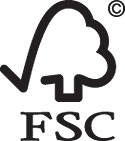 |
FSC Forest Stewardship Council Certification for Forest Management and Chain of Custody,www.fsc.org
Established: 1993
Industry: Forest products
About: FSC is an independent, nonprofit organization that sets standards for sustainable forest management and accredits third-party organizations to certify products.
Relevance:
FSC is the only sustainable wood certification recognized by the USGBC's LEED rating program and has wide industry recognition.
|
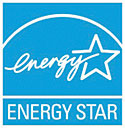 |
Energy Star
Environmental Protection Agency,www.energystar.gov
Established:1992
Industry: Electronics, appliances, HVAC, building systems
About: EPA's Energy Star was established to standardize energy efficiency for a range of products and buildings.
Relevance: Energy Star continues to be updated and is one of the most successful federal government programs. The EPA launched the Watersense program in 2007 to address water-
saving products.
|
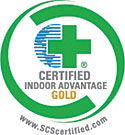 |
SCS Sustainable Choice Scientific Certification Systems,www.scscertified.com
Established: 2006
Industry: Indoor carpet, other building products
About: SCS's Sustainable Choice label recognizes carpets that conform to the NSF 140 standard for sustainable carpet, but will expand to other industries and standards.
Relevance: SCS is a third-party testing and certification organization widely recognized in the sustainable design community for its impartial and reliable work. |
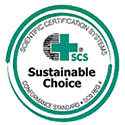
|
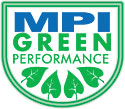 |
MPI Green Performance Master Painter's Institute,www.specifygreen.com
Established: 2005
Industry: Paint, lacquers, stains, floor coatings, and fire retardants
About:This standard is based on the EPA's standards for VOC content levels in surface coatings, as well as those of California's Air Quality Management Districts.
Relevance: Green Seal's sustainable paint standard is based on MPI's Green Performance, and it
is recognized in the LEED rating system.
|
 |
SFI Sustainable Forestry Initiative, American Forest & Paper Association,www.about-sfi.org
Established: 1996
Industry:Forest products
About:SFI was launched as a response by the timber industry to the establishment of FSC. It's a third-party certified standard that verifies sustainable logging and reforestation.
Relevance: SFI certification is not currently accepted by LEED, although this has been the topic of much research and discussion in the sustainable design community.
|
 |
Greenguard
Greenguard Environmental Institute (GEI),www.greenguard.org
Established:2002
Industry:Building products and furniture
About: GEI is a third-party, nonprofit organization that certifies products for emissions for indoor air quality.
Relevance: The Greenguard air-quality certification has achieved wide industry acceptance, from Cradle to Cradle to LEED. It has
been incorporated into other standards for a variety of products.
|
 |
Cradle to Cradle McDonough Braungart Design Chemistry (MBDC),www.mbdc.com
Established: 2005
Industry: Any
About: MBDC's program uses life-cycle assessment, focusing on recyclability,
disassembly, and material content as chief concerns.
Relevance: Cradle to Cradle has significant
industry recognition and is considered comprehensive, but its proprietary, closed process and lack of certified products has frustrated the design community.
|
 |
Planet Positive dCarbon8/Battle McCarthy,www.planet-positive.org
Established:2006
Industry:Products and buildings
About: dCarbon8 established the program to standardize how carbon credits have been treated in the building industry. Products and buildings are given credits that must be offset by owners.
Relevance:Planet Positive has lately focused on
buildings, since few if any products offer the credits. Its U.K. base has limited efforts to expand in the U.S.
|
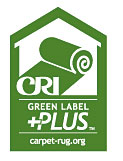 |
CRI Green Label Plus Carpet & Rug Institute (CRI),www.carpet-rug.org
Established:2004
Industry:Carpet
About:This label indicates compliance with California's CHPS Section 01350 for acceptable emissions for indoor air quality, also recognized as the NSF 140 standard for sustainable carpet.
Relevance: This label is simply the carpet industry's recognition of its sustainable products and, though respected, is still considered a second-party label.
|
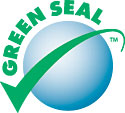 |
Green Seal Green Seal Organization,www.greenseal.org
Established: 1989
Industry: Building products
About: The nonprofit, independent Green Seal develops accredited, open standards based on existing standards, all focused on life-cycle assessment for many
products.
Relevance:Green Seal standards are cited by LEED, as well as
by government entities. Although it maintains standards for a limited group of products, it is viewed credibly in the market.
|
| The information included in this chart was compiled through a range of sources, including interviews for the accompanying article, previous reporting forArchitectural Record andGreenSource magazine, information provided by the organizations profiled, and from the organizations' Web sites. |